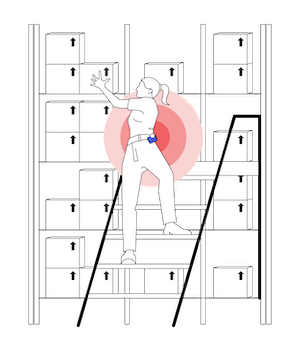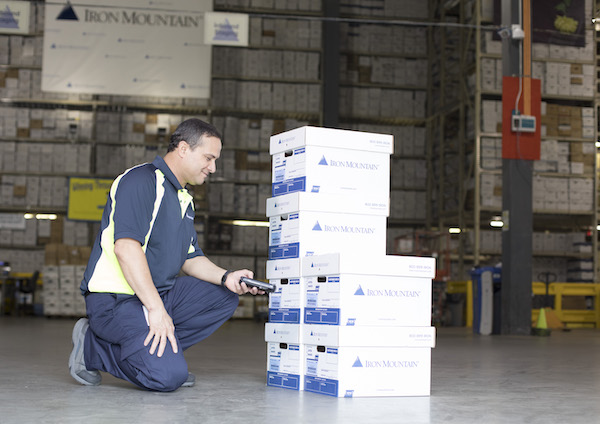
This month, the Occupational Safety and Health Administration (OSHA) announced a five-year regional initiative to reduce worker injuries and illnesses in the warehousing, storage, and distribution yards industries. The initiative, which focuses on employers in Pennsylvania, Delaware, the District of Columbia, and West Virginia, follows a 2020 Bureau of Labor Statistics finding that the warehousing and storage industry’s injury rate is almost twice that of all private industries. Nearly five of every 100 warehouse workers get injured on the job, compared to nearly three of every 100 private industry workers.
The OSHA program is the latest headline about warehouse worker safety, launched amidst growing reports of the hazardous conditions workers in this sector face every day, including ergonomic risks. In recent years, increased worker productivity requirements have been enforced to keep up with the growing e-commerce demand. This pressure on workers to move at a fast pace leads to muscle strains and repetitive motion injuries.
- Strain & sprain claims happen 42% of the time in the warehouse/wholesale sector.
- Strain & sprain claims are a leading loss driver among warehouse/wholesale workers, representing 41% of all claims costs.
Strain and sprain injuries are costly for employees and employers alike. Costs per claim for these injuries are higher than the average claim cost for this industry. According to the National Council on Compensation Insurance (NCCI) data for wholesalers in 2020:
- the average workers’ compensation claims cost was $11,363
- the average strain & sprain claims cost was $14,515
Wearables Enhance Loss Control
Reducing strain and sprain injuries among warehouse workers is key to keeping them safe and on the job. Wearable technology designed to reduce high risk movements – like improper bending, reaching, and twisting that is common among warehouse workers – can prevent injuries before they happen. These ergonomic wearables provide continuous coaching to help workers change the way they move. A light vibration alerts workers each time they make a risky movement on the job, increasing their awareness and helping them to create safer habits over time. As high risk movements decrease, the frequency of costly sprain and strain injuries goes down as well.
Wearable tech can reduce injury frequency by 50-60% and lost work days by 72%.
Perr&Knight actuarial analysis, 2021
Data collected from wearables also provide employers with actionable insights that uncover areas and employees that are most at risk. In turn, management can take specific measures to further reduce workplace risk and control loss.

For example, Iron Mountain reduced injuries by 64% year over year among hundreds of material handling associates in their warehouses, and drivers, after outfitting them with wearable tech. They also experienced a 58% reduction in their cost of worker’s compensation claims. Supervisors used data collected from the devices to create meaningful coaching moments with associates. After 12 months, Iron Mountain expanded its wearable program from five sites to over 60 and is making it an integral part of its safety program and culture.
While many Fortune 500 companies are successfully utilizing wearable technology to reduce injuries among their workforce, most moderately sized companies have traditionally not had the resources to deploy this innovative safety tech. Now, however, workers’ compensation policies are available that include wearable safety tech for policyholders at no extra cost. This proactive, tech-driven approach to workers’ comp offers a unique opportunity to extend wearable tech to more companies in the warehouse and wholesale sector, benefiting employees and employers alike.
Kinetic Insurance, in partnership with Nationwide, is pioneering a technology-driven approach to worker safety that benefits insurance carriers, brokers, and policyholders. Our workers’ compensation offerings lower costs by equipping workers with wearable technology that is proven to reduce injuries by as much as 60% and lost work days by 72%. Want to learn more? Click here to inquire about being appointed with Kinetic Insurance.
